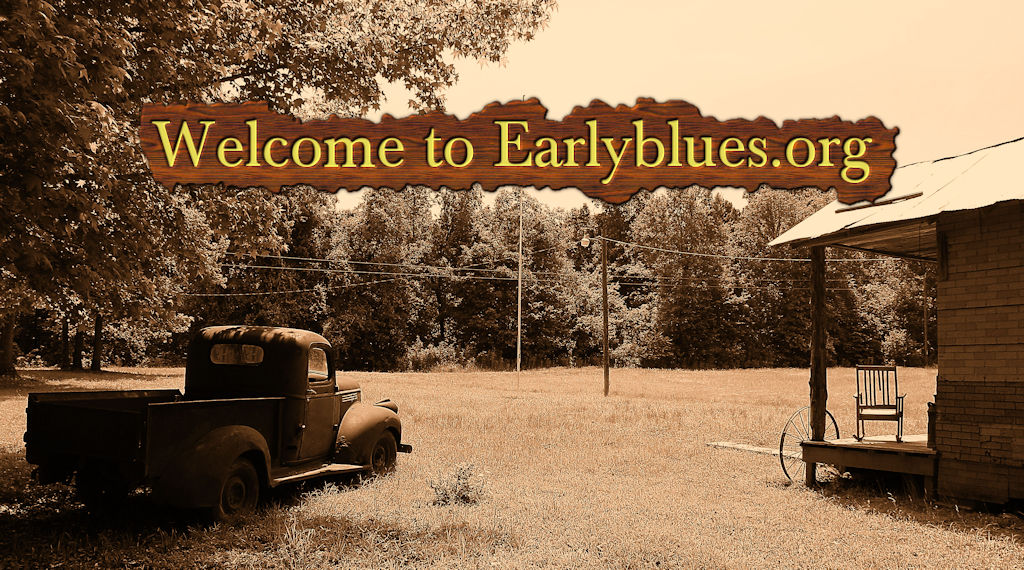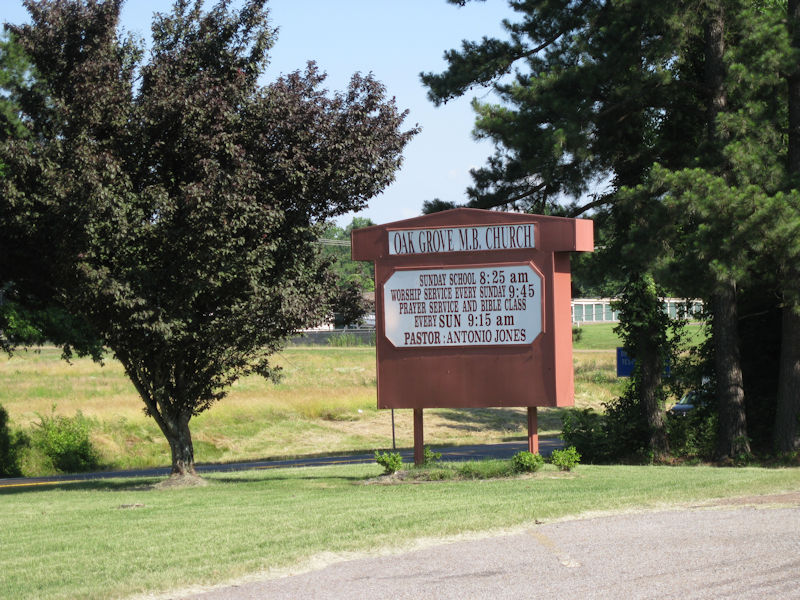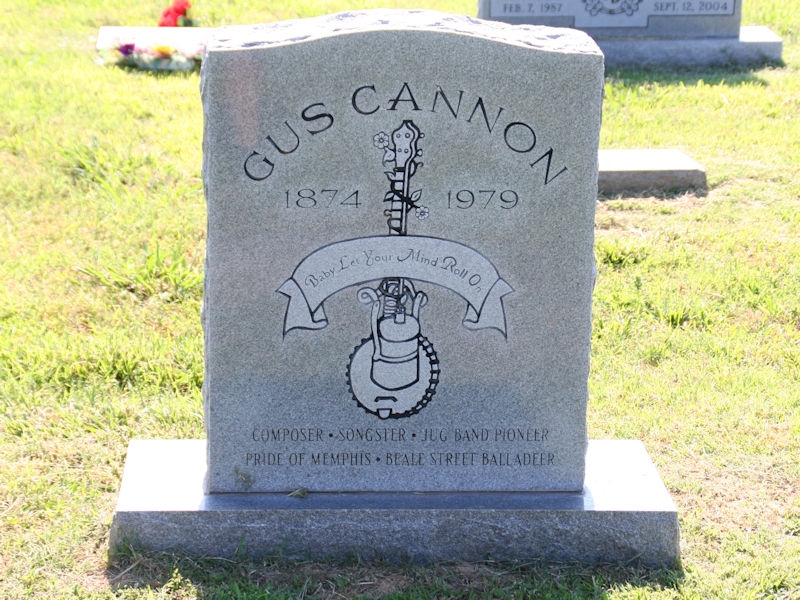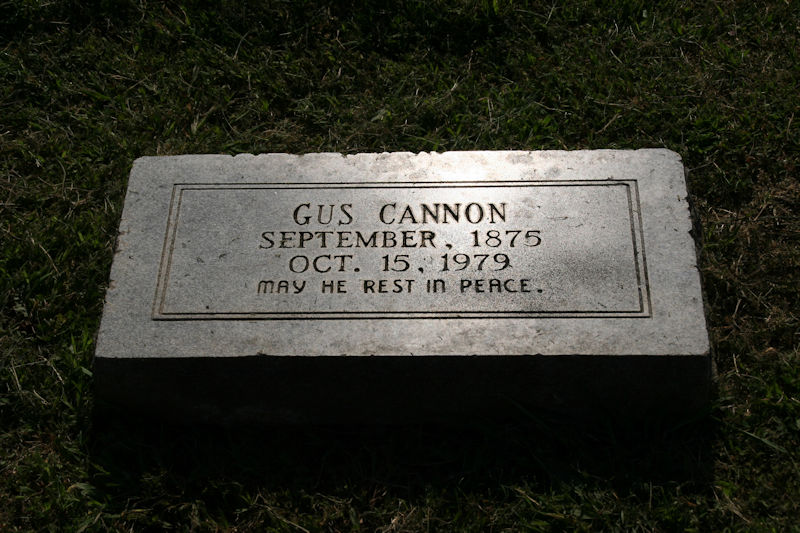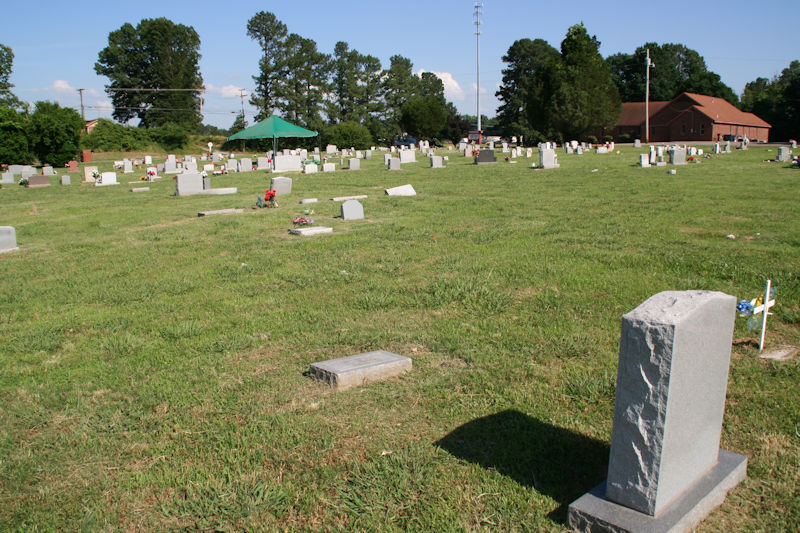Themed Photo Gallery and Information: Hernando, Mississippi
History
Hernando is a city in and the county seat of DeSoto County, which is on the northwest border of Mississippi, United States. The population was 14,090 at the 2010 census, up from 6,812 in 2000. DeSoto County is the second-most-populous county in the Memphis metropolitan area, which includes counties in Tennessee and Mississippi.
U.S. Route 51 and the I-55 freeway traverse the city from north to south, and the I-69 freeway crosses the city from east to west. The county courthouse is located within Hernando’s historic downtown square. It is located at the intersection of Commerce Street and present-day U.S. 51.
At the time of encounters by French and Spanish colonists, the Chickasaw people had long inhabited this area. France had developed colonial settlements along the Gulf Coast, to the north on the middle Mississippi River in what was called the Illinois Country, and in New France (present-day Quebec in Canada). An 18th-century French colonial log house in Hernando is a reminder of typical dwellings built in their settlements in the Illinois country, such as in Ste. Genevieve, Missouri. The French and French Canadians had a wide trading network with various American Indian tribes along this river, for instance in Natchez.
Following the Indian Removal Act of 1830 and under pressure from the United States, the Chickasaw finally signed a treaty to cede most of their lands in this area to the US. Most of the tribe were removed to west of the Mississippi River in Indian Territory.
This town was first called Jefferson by its new European American settlers. It was renamed as Hernando in 1832, after the Spanish explorer Hernando de Soto. He was the first European to discover the Mississippi River. This county was developed by European Americans during the antebellum years for cotton plantations, dependent on the enslaved labor of large gangs of African Americans.
During the early 20th century, many blues musicians developed in Hernando. African Americans had developed a strong musical tradition in areas along the Mississippi River, where many had grown up in families working as sharecroppers on cotton plantations. During the Great Migration of the first half of the 20th century, many blues musicians migrated north, taking their music to Chicago and helping create the culture of that city.
Source: Wikipedia
Mississippi Blues Trail Markers
There are currently no markers for the notable blues musicians of the area so below are the Wikipedia entries for: Garfield Akers, George “Mojo” Buford, Gus Cannon, Jim Jackson, Dan Sane, Frank Stokes, and Robert Wilkins.
Garfield Akers
Garfield Akers (possibly born James Garfield Echols, c. 1902 – c. 1959) was an American blues singer and guitarist. He sometimes performed under the pseudonym “Garfield Partee.”
Akers’ extant recordings consist of four sides, which are nonetheless historically significant. His most well-known song was his debut, “Cottonfield Blues”, a duet with friend and longtime collaborator Joe Callicott on second guitar, based on a song performed by Texas blues musician Henry Thomas a few years earlier.
Akers lived in Hernando, Mississippi most of his life, working as a sharecropper and performing during off-hours at local house parties and dances. He was Walter Horton’s stepfather. He toured with Frank Stokes on the Doc Watts Medicine Show. Akers was reportedly active on the south Memphis circuit throughout the 1930s. Akers and Callicott played together for more than twenty years, parting in the mid-1940s. Akers briefly resurfaced in the early 1950s. No photographs of Akers are known to exist.
Little is known of Akers’ background or origins, and the name “Garfield Akers” is not found in official records. Although birth years of 1897, 1901 and 1902 have been suggested, researchers Bob Eagle and Eric LeBlanc suggest that he may have been born James Garfield Echols (a surname which may have been misheard as Akers) in about 1908, possibly at Aiken, Tate County, Mississippi. He reportedly died at Hernando, Mississippi, in about 1959.
George “Mojo” Buford
George Carter Buford, Jr. (November 10, 1929 – October 11, 2011), known as Mojo Buford, was an American blues harmonica player best known for his work in Muddy Waters’s band.
Buford relocated from Hernando, Mississippi, to Memphis, Tennessee, in his youth, where he studied the blues. He relocated to Chicago in 1952, forming the Savage Boys, which eventually was known as the Muddy Waters, Jr. Band. They substituted for Waters at local nightclubs while he was touring.
Buford first played in Waters’s backing band in 1959, replacing Little Walter, but in 1962 moved to Minneapolis to front his own band and to record albums. In Minneapolis he gained the nickname Mojo, because of audiences requesting him to perform his cover version of “Got My Mojo Working.” Buford returned to Waters’s combo in 1967 for a year, replacing James Cotton. He had a longer tenure with Waters in the early 1970s and returned for the final time after Jerry Portnoy departed to form the Legendary Blues Band.
He also recorded for the Mr. Blues label. These recordings were later reissued by Rooster Blues, Blue Loon Records, and the British JSP label.
Buford died on October 11, 2011, at the age of 81, in Minneapolis, after a long hospitalization.
Gus Cannon
Gustavus “Gus” Cannon (September 12, 1883 or 1884 – October 15, 1979) was an American blues musician who helped to popularize jug bands (such as his own Cannon’s Jug Stompers) in the 1920s and 1930s. There is uncertainty about his birth year; his tombstone gives the date as 1874.
Born on a plantation in Red Banks, Mississippi, Cannon moved a hundred miles to Clarksdale, then the home of W. C. Handy, at the age of 12. His musical skills came without training; he taught himself to play a banjo that he made from a frying pan and a raccoon skin. He ran away from home at the age of fifteen and began his career entertaining at sawmills and levee and railroad camps in the Mississippi Delta around the turn of the century.
While in Clarksdale, Cannon was influenced by two local musicians, Jim Turner and Alec Lee. Turner’s fiddle playing in W. C. Handy’s band so impressed Cannon that he decided to learn to play the fiddle himself. Lee, a guitarist, taught Cannon his first folk blues, “Po’ Boy, Long Ways from Home”, and showed him how to use a knife blade as a slide, a technique that Cannon adapted to his banjo playing.
Cannon left Clarksdale around 1907 and soon settled near Memphis, Tennessee, where he played in a jug band led by Jim Guffin. He began playing in Memphis with Jim Jackson. He met the harmonica player Noah Lewis, who introduced him to a young guitar player, Ashley Thompson. Lewis and Thompson later were members of Cannon’s Jug Stompers. The three of them formed a band to play at parties and dances. In 1914 Cannon began touring in medicine shows. He supported his family through various jobs, including sharecropping, ditch digging, and yard work, but supplemented his income with music.
Cannon began recording, as Banjo Joe, for Paramount Records in 1927. At that session he was backed by Blind Blake. After the success of the Memphis Jug Band’s first records, he quickly assembled a jug band, Cannon’s Jug Stompers, featuring Lewis and Thompson (later replaced by Elijah Avery). The group was first recorded at the Memphis Auditorium for Victor Records in January 1928. Hosea Woods joined the Jug Stompers in the late 1920s, playing guitar, banjo and kazoo and providing some vocals. Cannon’s Jug Stompers’ recording of “Big Railroad Blues” is available on the compilation album The Music Never Stopped: Roots of the Grateful Dead.
Although their last recordings were made in 1930, Cannon’s Jug Stompers were one of Beale Street’s most popular jug bands through the 1930s. A few songs Cannon recorded with the Jug Stompers are “Minglewood Blues”, “Pig Ankle Strut”, “Wolf River Blues”, “Viola Lee Blues”, “White House Station” and “Walk Right In” (a pop hit for The Rooftop Singers in the 1960s and for Dr. Hook in the 1970s). By the end of the 1930s, Cannon had effectively retired, although he occasionally performed as a solo musician.
Cannon made a few recordings for Folkways Records in 1956. During the blues revival of the 1960s, he made some appearances at colleges and coffee houses with Furry Lewis and Bukka White, but he had to pawn his banjo to pay his heating bill the winter before The Rooftop Singers had a hit with “Walk Right In”.
Jim Jackson
Jim Jackson (June 1876 – December 18, 1933) was an American blues and hokum singer, songster, and guitarist, whose recordings in the late 1920s were popular and influential on later musicians.
Jackson was born in Hernando, Mississippi. The researchers Bob Eagle and Eric LeBlanc date his birth as 1876, but other sources give 1884 or 1890. He was raised on a farm, where he learned to play guitar. Around 1905 he started working as a singer, dancer, and musician in medicine shows and played at dances and parties, often with other local musicians, such as Gus Cannon, Frank Stokes and Robert Wilkins. He soon began travelling with the Rabbit Foot Minstrels, featuring Ma Rainey and Bessie Smith, and other minstrel shows.
He also played in clubs on Beale Street in Memphis, Tennessee. His popularity and proficiency secured him a residency at the prestigious Peabody Hotel in Memphis in 1919. Like Lead Belly, Jackson knew hundreds of songs, including blues, ballads, vaudeville numbers, and traditional tunes, and became a popular attraction.
In 1927 the talent scout H. C. Speir obtained for him a recording contract with Vocalion Records. On October 10, 1927, he recorded “Jim Jackson’s Kansas City Blues”, which became a best-seller. Its melody and lyrics can be traced in many later blues and rock and roll songs, including “Rock Around the Clock” and “Kansas City”. Following this hit Jackson recorded a series of “Kansas City” follow-ups and soundalikes. Other artists recorded cover versions of the song (including William Harris in 1928) and reworked it (as Charlie Patton did, changing it to “Gonna Move to Alabama.”) Jackson moved to Memphis in 1928 and made a series of further recordings, including the comic medicine show song “I Heard the Voice of a Pork Chop”. He also appeared in King Vidor’s all-black 1929 film Hallelujah!; it is unclear what role he played.
Jackson ran the Red Rose Minstrels, a travelling medicine show which toured Mississippi, Arkansas and Alabama. As a talent scout for Brunswick Records, he discovered Rufus “Speckled Red” Perryman, gaining him his first recording session. Shortly afterwards, in February 1930, Jackson recorded his last session. He later moved back to Hernando and continued to perform until his death in 1933.
Dan Sane
Dan Sane (possibly September 22, 1896 – February 18, 1956) was an American Memphis blues and country blues guitarist and songwriter. He was an associate of Frank Stokes. According to the Music journalist Jason Ankeny, “they had emerged among the most complementary duos in all of the blues, with Sane’s flatpicking ideally embellished by Stokes’ fluid rhythms.” The best-known of the songs written by Sane are “Downtown Blues” and “Mr. Crump Don’t Like It.” His surname was sometimes spelled “Sain”.
Sane was born Daniel Sains, in Hernando, Mississippi. There is uncertainty over his date of birth; most sources state September 22, 1896, but the researchers Bob Eagle and Eric LeBlanc suggest October 23, 1892, or perhaps 1890. Some sources cite 1904 as his birth year and Michigan [sic], Mississippi, as his birthplace.
He moved to Memphis, Tennessee, and played in Will Batts’s string band, before meeting the guitar player Frank Stokes. Sane and Stokes busked together around Beale Street in Memphis on weekends. During the 1920s the pair performed as a duo, billed as the Beale Street Sheiks, and played in white venues, including country clubs, parties and dances, as members of Jack Kelly’s Jug Busters. Their first recording was made for Paramount Records in August 1927, as the Beale Street Sheiks. A National Park Service tourist guide to the blues heritage of the Mississippi Delta says, “The fluid guitar interplay between Stokes and Sane, combined with a propulsive beat, witty lyrics, and Stokes’s stentorian voice, make their recordings irresistible.”
Sane and Stokes moved to Victor Records in 1928. Their recordings were released under Stokes’s name. They recorded a two-part version of “Tain’t Nobody’s Business if I Do”, a song well known in later versions by Bessie Smith and Jimmy Witherspoon, but whose origin lies in the pre-blues era. A locally popular song was “Mr. Crump Don’t Like It,” whose lyrics referred to E. H. Crump, the mayor of Memphis, and his campaign to clean up less salubrious areas of the city. That song may have been based on an earlier song on the same topic by W. C. Handy. The Sheiks also continued to busk on the streets and play at parties.
In 1929, Stokes and Sane recorded again for Paramount, resuming their billing as the Beale Street Sheiks for a few cuts. These 1929 sides were their last together, although they continued an intermittent performing partnership until Sane’s retirement from music in 1952.
In 1933, Sane recorded with the singer and guitarist Jack Kelly (1905–1953) and the fiddler Will Batts (1904–1956), as the South Memphis Jug Band.
According to most sources, Sane died in Memphis in February 1956, aged 59, but Eagle and LeBlanc state that he died in Osceola, Arkansas, on June 27, 1965.
His grandson was the saxophonist Oliver Sain.
Sane’s recordings as a guitarist are available on numerous compilation albums, including The Best of Frank Stokes (Yazoo Records, 2005).
Frank Stokes
Frank Stokes (January 1, 1877 or 1888 – September 12, 1955) was an American blues musician, songster, and blackface minstrel, who is considered by many musicologists to be the father of the Memphis blues guitar style.
Stokes was born in Shelby County, Tennessee, in the vicinity of Whitehaven, located two miles north of the Mississippi state line. There is uncertainty over his year of birth; his daughter and later sources reported 1888, but the researchers Bob Eagle and Eric LeBlanc give 1877, the date on his World War I draft card.
His parents died when he was a child, and he was raised by his stepfather in Tutwiler, Mississippi. He learned to play the guitar as a youth in Tutwiler and, after 1895, in Hernando, Mississippi, which was the home of the guitarists Jim Jackson, Dan Sane, Elijah Avery (of Cannon’s Jug Stompers), and Robert Wilkins. By the turn of the century, Stokes was working as a blacksmith, traveling 25 miles to Memphis on weekends to sing and play the guitar with Sane, with whom he formed a long-term musical partnership. Together, they busked on the streets and in Church’s Park (now W. C. Handy Park) on Memphis’s Beale Street in Memphis.
In the mid-1910s, Stokes joined another Mississippi musician, Garfield Akers, as a blackface songster, comedian, and buck dancer in the Doc Watts Medicine Show, a tent show that toured the South. During this period of touring, Stokes developed a professionalism that set him apart from many of the more rural, less polished blues musicians of that time and place. It is said that his performances on the southern minstrel and vaudeville circuit around this time influenced the country singer Jimmie Rodgers, who played the same circuit. Rodgers borrowed songs and song fragments from Stokes and was influenced stylistically as well.
Around 1920, Stokes settled in Oakville, Tennessee, where he went back to work as a blacksmith. He teamed up again with Sane, playing dances, picnics, fish fries, saloons, and parties in his free time. The two joined Jack Kelly’s Jug Busters to play at white country clubs, parties, and dances. Stokes and Sane performed on Beale Street as the Beale Street Sheiks and first recorded under that name for Paramount Records in August 1927. Stokes eventually cut 38 sides for Paramount and Victor Records. “The fluid guitar interplay between Stokes and Sane, combined with a propulsive beat, witty lyrics, and Stokes’s stentorian voice, make their recordings irresistible.” Their duet style influenced the young Memphis Minnie in duets with her husband, Kansas Joe McCoy.
The Sheiks next recorded at a session for Victor Records in February 1928, at which Furry Lewis also recorded. At this session, the emphasis was on blues rather than the older songs that were also part of Stokes’s repertoire. Stokes recorded again for Victor that August, playing “I Got Mine”, one of a body of pre-blues songs about gambling, stealing and living high. He also recorded the more modern “Nehi Mama” (or “Nehi Mama Blues”, also rendered as “Nehi Mamma Blues”), the title being a pun on the name of the Nehi soft drink and the knee-high skirts that were fashionable at the time. Sane joined Stokes for the second day of the August 1928 session, and they produced a two-part version of “Tain’t Nobody’s Business if I Do”, a song well known in later versions by Bessie Smith and Jimmy Witherspoon but whose origin lies in the pre-blues era. The Sheiks also continued to busk on the streets and perform at parties.
In 1929, Stokes and Sane recorded again for Paramount, resuming their billing as the Beale Street Sheiks for a few cuts. In September, Stokes was back with Victor to make what were to be his last recordings, this time without Sane but with Will Batts playing the fiddle. Stokes and Batts were a team, as evidenced by these records, which are both traditional and wildly original, but their style had fallen out of favor with the record-buying public. Stokes was still a popular live performer, however, appearing in medicine shows, the Ringling Brothers Circus, and other tent shows and similar venues during the 1930s and 1940s. In the 1940s, he moved to Clarksdale, Mississippi, and occasionally worked with Bukka White in local juke joints.
Stokes died of a stroke in Memphis on September 12, 1955. He is buried in Hollywood Cemetery, in Memphis. In 2017, Frank Stokes was inducted into the Memphis Music Hall of Fame.
Robert Wilkins
Robert Timothy Wilkins (January 16, 1896 – May 26, 1987) was an American country blues guitarist and vocalist, of African-American and Cherokee descent. His distinction was his versatility: he could play ragtime, blues, minstrel songs, and gospel music with equal facility.
Wilkins was born in Hernando, Mississippi, 21 miles from Memphis, Tennessee. He performed in Memphis and north Mississippi during the 1920s and early 1930s, the same time as Furry Lewis, Memphis Minnie (whom he claimed to have tutored), and Son House. He also organized a jug band to capitalize on the “jug band craze” then in vogue. Though never attaining success comparable to that of the Memphis Jug Band, Wilkins reinforced his local popularity with a 1927 appearance on a Memphis radio station. From 1928 to 1936 he recorded for Victor and Brunswick Records, alone or with a single accompanist, like Sleepy John Estes, and unlike Gus Cannon of Cannon’s Jug Stompers. He sometimes performed as Tom Wilkins or as Tim Oliver (his stepfather’s name).
In 1936, at the age of 40, he quit playing the blues and joined the church after witnessing a murder where he performed. In 1950, he was ordained. In 1964 Wilkins was “rediscovered” by blues revival enthusiasts Dick and Louisa Spottswood, making appearances at folk festivals and recording his gospel blues for a new audience. These include the 1964 Newport Folk Festival; his performance of “Prodigal Son” there was included on the Vanguard Records album Blues at Newport, Volume 2. In 1964 he also recorded his first full album, Rev. Robert Wilkins: Memphis Gospel Singer, for Piedmont Records. Another full session, recorded live at the 1969 Memphis Country Blues Festival, was released in 1993 as “…Remember Me”.
Wilkins died on May 26, 1987, in Memphis at the age of 91. His son, Reverend John Wilkins, continues his father’s gospel blues legacy.
His best-known songs are “That’s No Way to Get Along” and his reworked gospel version, “The Prodigal Son” (which was covered under that title by the Rolling Stones), “Rolling Stone”, and “Old Jim Canan’s”. The Stones were forced to credit “The Prodigal Son” to Wilkins after lawyers approached the band and asked for the credit to be changed. Early pressings of Beggars Banquet credited only Mick Jagger and Keith Richards as composers, not Wilkins. The original Beggars Banquet toilet cover credited Wilkins. When the record company rejected the cover, the revised plain white cover mistakenly credited Jagger-Richards as composer. Recent CD releases use the toilet photo with proper credit.
Source: Wikipedia
